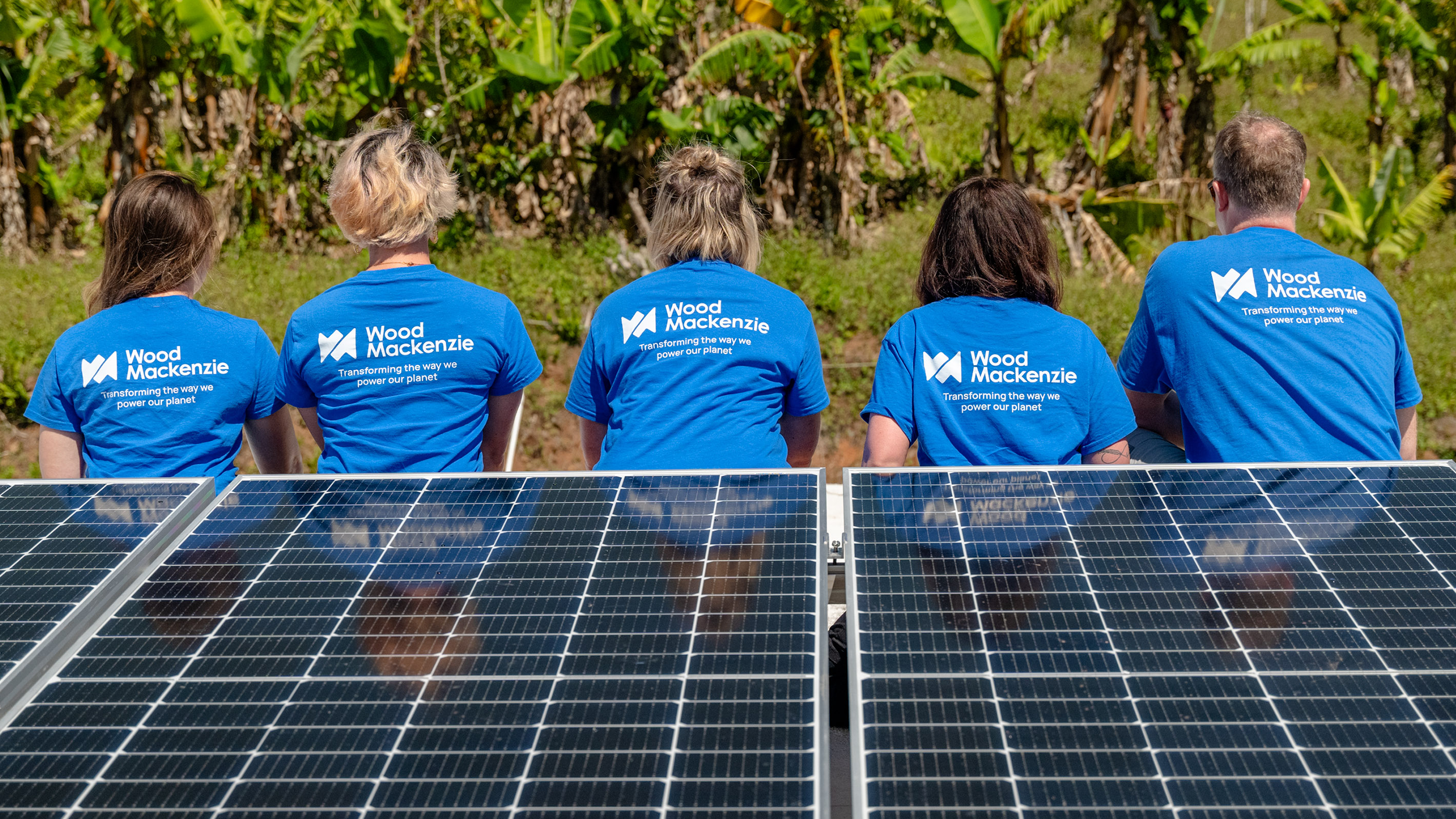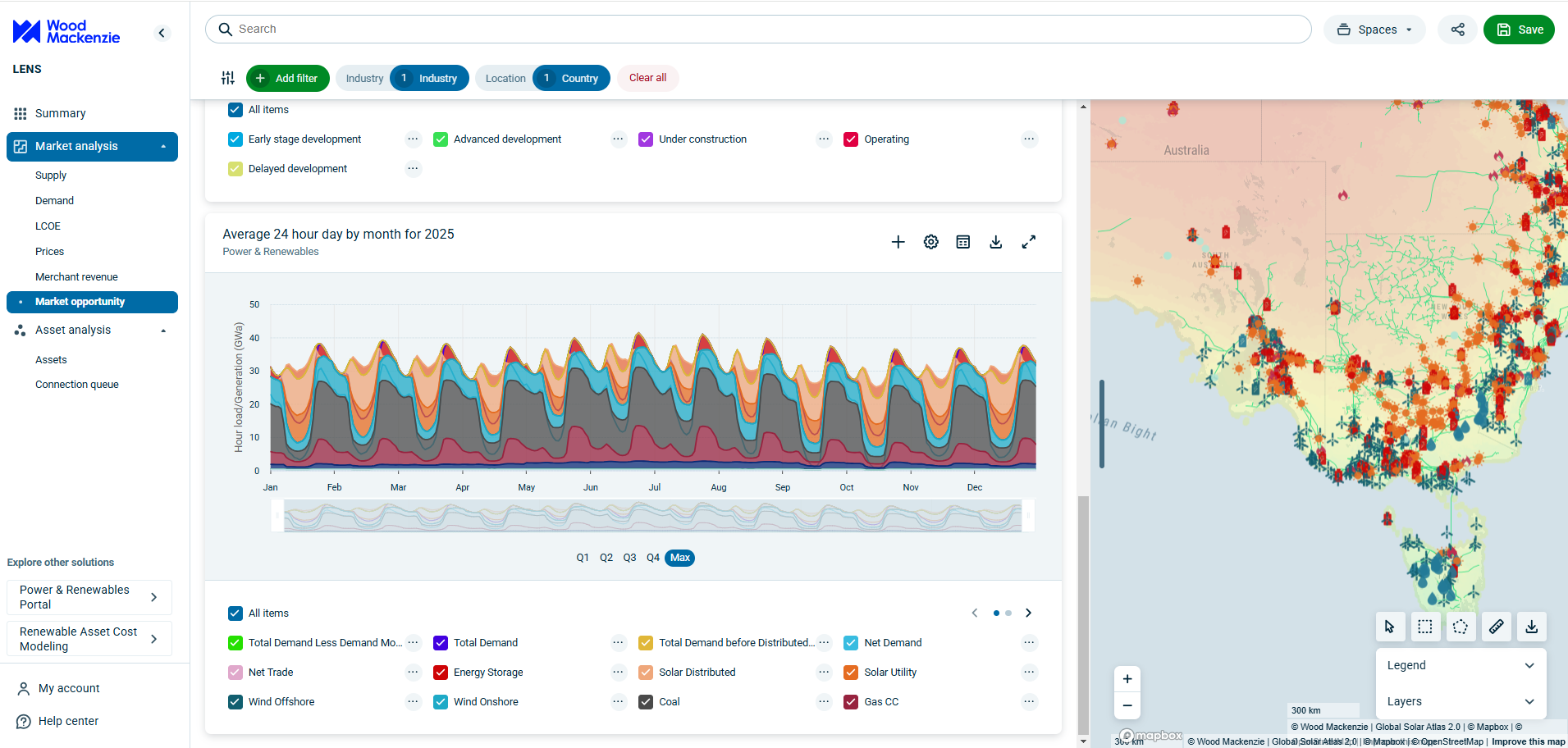Discuss your challenges with our solutions experts
Power and renewables investment analysis: H1 2025 trends and the H2 outlook
4 minute read
Jason Liu
Chief Executive Officer

Jason Liu
Chief Executive Officer
Jason is a veteran CEO with over 25 years experience in leading high-growth software, data, and services companies.
View Jason Liu's full profileThe first half of 2025 has been a pivotal period for power and renewables investment analysts, marked by significant policy shifts, technological breakthroughs, and evolving market dynamics. As we enter the second half of the year, understanding these trends is crucial for making informed investment decisions in an increasingly complex energy landscape.
Key trends that shaped H1 2025
1. Grid infrastructure investment surge
The most significant trend affecting analysts has been the unprecedented focus on grid modernization and expansion. Following major grid stability issues in early 2025, governments worldwide accelerated infrastructure spending, with the U.S. announcing a $150 billion grid enhancement program and the EU launching its "Grid 2030" initiative. This has created substantial opportunities in transmission infrastructure, smart grid technologies, and energy storage integration.
Investment Impact: Traditional utility valuations have been reassessed upward, while grid technology companies have seen significant multiple expansion.
2. AI-driven energy management revolution
Artificial intelligence integration in energy systems reached a tipping point in H1 2025. Major utilities began deploying AI for predictive maintenance, demand forecasting, and real-time grid optimization. This trend has been accelerated by the growing energy demands of data centers and AI computing facilities.
Key metrics: Companies with strong AI capabilities in energy management have outperformed sector averages by 25-30%.
3. Offshore wind financing evolution
The offshore wind sector experienced a fundamental shift in financing structures, with the emergence of "green infrastructure bonds" and increased participation from sovereign wealth funds. Project sizes have grown substantially, with several 2+ GW developments reaching financial close.
Market Dynamics: Cost of capital for offshore wind projects decreased by 50-75 basis points compared to 2024, improving project economics significantly.
4. Energy storage market maturation
Battery energy storage systems (BESS) moved from growth to maturity phase, with standardized financing approaches and improved revenue visibility. The introduction of capacity markets in several jurisdictions has provided clearer revenue streams for storage investments.
Valuation Shift: Storage assets are now being valued more like traditional infrastructure, with lower risk premiums and longer-term cash flow projections.
5. Green hydrogen scale-up challenges
While green hydrogen remained a focus area, H1 2025 revealed significant scaling challenges. Several high-profile project delays and cost overruns have led to more conservative analyst projections and increased scrutiny of business models.
Reality check: Analysts have extended commercialization timelines by 2-3 years for most green hydrogen applications.
Critical considerations for H2 2025
Policy and regulatory landscape
What to watch:
- Implementation details of the U.S. Clean Energy Investment Tax Credit extensions
- EU's revised Renewable Energy Directive impact on project economics
- China's potential policy shifts affecting global supply chains
- State-level renewable portfolio standard updates
Analyst action items: Reassess project pipelines based on updated policy frameworks and adjust regional allocation strategies accordingly.
Technology and cost dynamics
Emerging factors:
- Perovskite-silicon tandem solar cell commercialization timeline
- Floating offshore wind cost reduction trajectory
- Next-generation battery chemistry deployment schedules
- Carbon capture integration with renewable projects
Investment implications: Technology leaders may command premium valuations, while laggards face margin compression risks.
Market structure evolution
Key developments to monitor:
- Corporate renewable energy procurement trends
- Utility-scale vs. distributed generation investment flows
- Power purchase agreement (PPA) pricing and structure evolution
- Merchant power market dynamics in high-renewable penetration grids
Geopolitical and supply chain considerations
Critical risks:
- Continued supply chain diversification away from single-source dependencies
- Trade policy impacts on equipment costs and project timelines
- Resource nationalism affecting critical mineral access
- International climate finance flow changes
Investment strategy recommendations for H2 2025
1. Diversify technology exposure
While solar and wind remain core holdings, consider increasing allocation to enabling technologies like grid infrastructure, energy storage, and demand response systems.
2. Focus on execution capability
In a maturing market, companies with proven development and operational track records will command premium valuations. Prioritize management teams with demonstrated ability to navigate complex regulatory and financing environments.
3. Monitor policy implementation
Stay closely aligned with policy development timelines, as implementation details will significantly impact project economics and investment returns.
4. Prepare for volatility
Expect continued volatility in commodity prices, interest rates, and regulatory frameworks. Maintain flexibility in portfolio construction and be prepared to capitalize on market dislocations.
5. ESG integration deepens
Environmental, social, and governance factors are becoming increasingly material to investment performance. Ensure comprehensive ESG analysis is integrated into all investment decisions.
Conclusion
The second half of 2025 presents both significant opportunities and complex challenges for power and renewables investment analysts. Success will depend on maintaining a nuanced understanding of rapidly evolving technology, policy, and market dynamics while staying focused on fundamental investment principles.
The sector's maturation means that traditional infrastructure investment approaches are becoming more applicable, but the pace of change requires continued vigilance and adaptability. Analysts who can effectively navigate this balance between stability and innovation will be best positioned to generate superior risk-adjusted returns for their stakeholders.
As we progress through H2 2025, the key to success lies in maintaining a forward-looking perspective while remaining grounded in rigorous fundamental analysis. The energy transition continues to accelerate, and those who can identify and capitalize on emerging trends will drive the investment performance that defines this critical period in energy market evolution.






